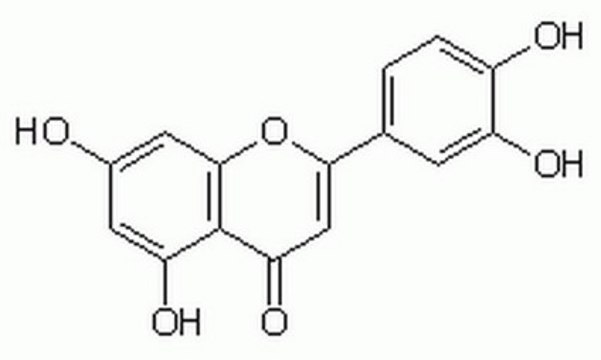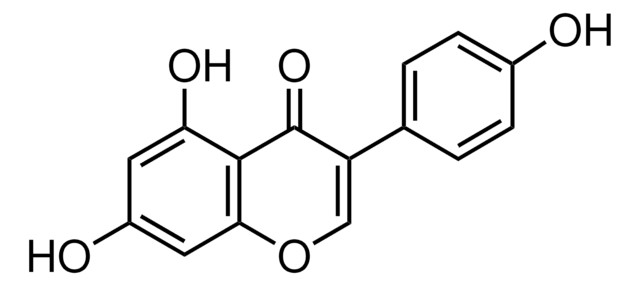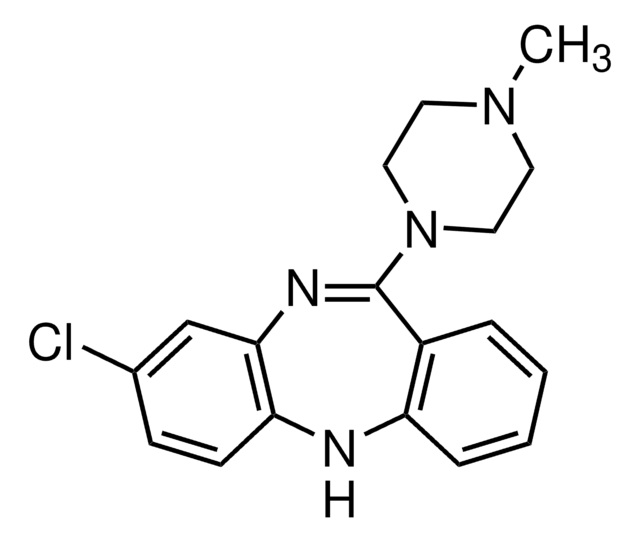E7881
Emodin
from Frangula bark, ≥90% (HPLC), casein Kinase 2 (CK2) inhibitor
Synonym(s):
1,3,8-Trihydroxy-6-methyl-9,10-anthracenedione, 1,3,8-Trihydroxy-6-methylanthraquinone, 6-Methyl-1,3,8-trihydroxyanthraquinone, Archin, Emodol, Frangula-emodin, Frangulic acid, Rheum emodin
Select a Size
About This Item
Recommended Products
Product Name
Emodin, from Frangula bark, ≥90% (HPLC)
biological source
Frangula bark
Quality Level
Assay
≥90% (HPLC)
solubility
DMSO: soluble
aqueous base: soluble
ethanol: soluble
storage temp.
2-8°C
SMILES string
Cc1cc(O)c2C(=O)c3c(O)cc(O)cc3C(=O)c2c1
InChI
1S/C15H10O5/c1-6-2-8-12(10(17)3-6)15(20)13-9(14(8)19)4-7(16)5-11(13)18/h2-5,16-18H,1H3
InChI key
RHMXXJGYXNZAPX-UHFFFAOYSA-N
Gene Information
human ... CSNK2A1(1457), CSNK2B(1460), ELA2(1991), NFKB1(4790), NKAP(79576), NKRF(55922)
Looking for similar products? Visit Product Comparison Guide
Related Categories
1 of 4
This Item | 324694 | 30269 | PHL89191 |
|---|---|---|---|
| assay ≥90% (HPLC) | assay ≥90% (HPLC) | assay ≥97.0% (HPLC) | assay ≥90.0% (HPLC) |
| Quality Level 200 | Quality Level 100 | Quality Level 100 | Quality Level - |
| storage temp. 2-8°C | storage temp. 2-8°C | storage temp. 2-8°C | storage temp. - |
| solubility DMSO: soluble, ethanol: soluble, aqueous base: soluble | solubility DMSO: 1 mg/mL, aqueous base: soluble, ethanol: soluble | solubility - | solubility - |
| biological source Frangula bark | biological source - | biological source - | biological source - |
| Gene Information human ... CSNK2A1(1457), CSNK2B(1460), ELA2(1991), NFKB1(4790), NKAP(79576), NKRF(55922) | Gene Information - | Gene Information - | Gene Information - |
General description
Application
- to investigate its regulatory mechanisms on lipopolysaccharide (LPS)-induced inflammatory injury in myocarditis[4]
- as a reference standard for the development and validation of high performance liquid chromatography (HPLC)-photodiode array (PDA) assay method[3]
- to inhibit Tau aggregation[5]
- for direct binding assay[6]
Biochem/physiol Actions
Signal Word
Warning
Hazard Statements
Precautionary Statements
Hazard Classifications
Acute Tox. 4 Oral
Storage Class Code
11 - Combustible Solids
WGK
WGK 3
Flash Point(F)
Not applicable
Flash Point(C)
Not applicable
Personal Protective Equipment
Choose from one of the most recent versions:
Certificates of Analysis (COA)
Don't see the Right Version?
If you require a particular version, you can look up a specific certificate by the Lot or Batch number.
Already Own This Product?
Find documentation for the products that you have recently purchased in the Document Library.
Our team of scientists has experience in all areas of research including Life Science, Material Science, Chemical Synthesis, Chromatography, Analytical and many others.
Contact Technical Service










